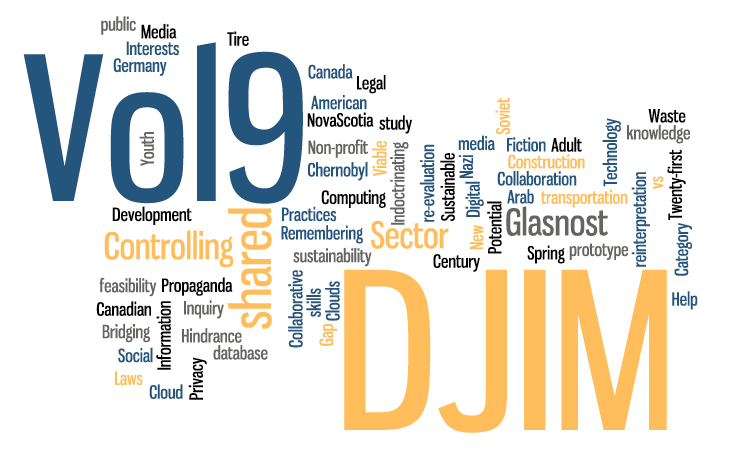Digital Technology: Help or Hindrance? Remembering in the Twenty-first Century
DOI:
https://doi.org/10.5931/djim.v9i1.3360Keywords:
digital technology, memory, human memory, information in society, remembering, forgetting, memory comprehension, twenty-first century, 21st centuryAbstract
People are adapting to technologies such as smart phones, portable hard drives, USB keys and online repertoires that are easy to acquire and use. We access the internet from almost anywhere, as well as store documents, pictures, artwork, journals, and records on our external devices. Digital technology is useful, but is it eliminating our brain‘s ability to remember? This paper will identify possible future effects of digital technologies on human memory. The switch from physical to digital records has effectively changed our attitudes towards memorabilia, causing a proliferation of massive file storage, but less file usage. Humans are experiencing unique new ambivalence where their data is safe, yet always subject to technical malfunction. Message interruption research has shown negative results regarding average memory retention. Implications for information managers are also discussed–stressing the importance of creating backup copies, as well as introducing memory retention practices to the workplace.References
Boorstin, D. (1983). The discoverers. New York: Random House.
Carr, N. (2010). The shallows. New York: W.W. Norton & Company.
Case, A. (2010). We are all cyborgs now [Video file]. Retrieved from http://www.ted.com/talks/amber_case_we_are_all_cyborgs_now.html
Chocano, C. (2012). The dilemma of being a cyborg. New York Times. Retrieved from http://www.nytimes.com/2012/01/29/magazine/what-happens-when-data-disappears.html?pagewanted=all&_r=0
Federal agency loses data on 583,000 Canadians. (2013). CBC News. Retrieved from http://www.cbc.ca/m/touch/news/story/2013/01/11/hard-drive-missing-student-loans.html
Hoskins, A. (2011). Media, memory, metaphor: Remembering and the connective turn. Prallax, 17(4), 19-31. http://dx.doi.org/10.1080/13534645.2011.605573
Mayer-Schönberger, V. (2009). Delete: The virtue of forgetting in the digital age. Princeton, New Jersey: Princeton University Press.
Mussell, J. (2012). The passing of print. Media History, 18(1), 77-92. http://dx.doi.org/10.1080/13688804.2011.637666
Oulasvirta, A., & Saariluoma, P. (2007). Long-term working memory and interrupting messages in human-computer interaction. Behaviour & Information Technology, 23(1), 53-64. http://dx.doi.org/10.1080/01449290310001644859
Weinberger, D. (2007). Everything is miscellaneous: The power of the new digital disorder. New York: Times Books.
Downloads
Published
Issue
Section
License
Papers published in the Dalhousie Journal of Interdisciplinary Management must be the original, unpublished work of the author. Contributors are responsible for obtaining any copyright clearances required in relation to their work.
Authors submitting a paper to the Dalhousie Journal of Interdisciplinary Management automatically agree to grant a limited license to DJIM if and when the manuscript is accepted for publication. This license gives permission for DJIM to publish the paper in a given issue and to maintain the work in the electronic journal archive. DJIM also submits issues to institutional repositories and Open Access repositories.
Contributors agree to each reader accessing, downloading, or printing one copy of their article for their own personal use or research. All other copyrights remain with the author, subject to the requirements that any republication of the work be accompanied by an acknowledgement that the work was first published in the Dalhousie Journal of Interdisciplinary Management and that the DJIM Editorial Chair must be notified of any republication of a work first published in DJIM.
Dalhousie Journal of Interdisciplinary Management
c/o School of Information Management
Faculty of Management
Dalhousie University
Kenneth C. Rowe Management Building
6100 University Avenue
Halifax, Nova Scotia B3H 3J5
Canada
Email: djim@dal.ca
Authors should recognize that, because of the nature of the Internet, the publisher has no control over unauthorized copying or editing of protected works.


